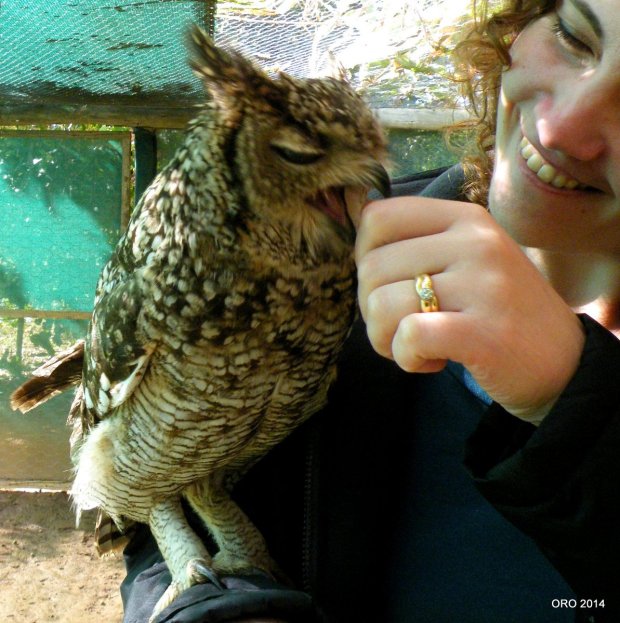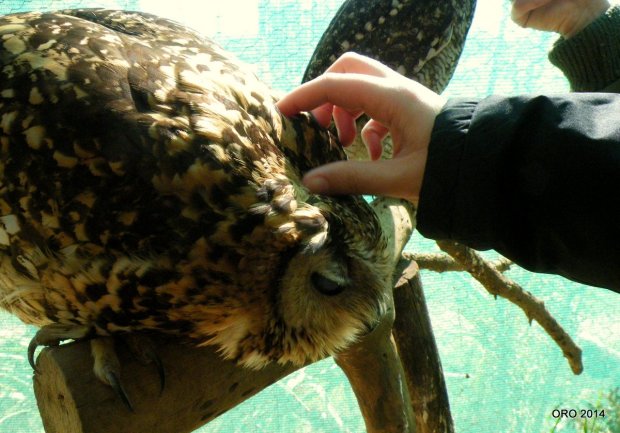Boeta walked up to me and we watched the merinos for a moment before I showed him something much more interesting. Looking back his reaction was pretty fascinating for a 2 year-old.
 Half “parked” in a small bush next to us was a wild Leopard tortoise. By my estimation it must be around 30 years+ old, if not much older, whatever the case may be, not a young specimen. I told Boeta to look at the tortoise, his first ever face to face with a big one. An amazing thing happened, he was like a veterinarian, immediately interested and concerned for the health as he laid his little hands on the old lady’s shell and inspected her…he was very serious too.
Half “parked” in a small bush next to us was a wild Leopard tortoise. By my estimation it must be around 30 years+ old, if not much older, whatever the case may be, not a young specimen. I told Boeta to look at the tortoise, his first ever face to face with a big one. An amazing thing happened, he was like a veterinarian, immediately interested and concerned for the health as he laid his little hands on the old lady’s shell and inspected her…he was very serious too.


 I turned her slightly out the bush so that he could see her face and this seemed to get him excited and in a lighter mood again. We decided to walk on, excitedly talking about our find and the fact that it blended in so nicely, I nearly missed it totally.
I turned her slightly out the bush so that he could see her face and this seemed to get him excited and in a lighter mood again. We decided to walk on, excitedly talking about our find and the fact that it blended in so nicely, I nearly missed it totally.

 Boeta was back exploring, which made life pretty tough for mom, because he kept running off the track into the field and getting grass up in places he did not want it.
Boeta was back exploring, which made life pretty tough for mom, because he kept running off the track into the field and getting grass up in places he did not want it.


 Once she got the irritants out, he immediately forgot about it and was off again…
Once she got the irritants out, he immediately forgot about it and was off again…
 At this point we had been walking for a good 30 minutes and knew we had to turn around as he was still a toddler and this equaled an hour walk already. We turned around and when we got to the point where we left the tortoise, it was still there…
At this point we had been walking for a good 30 minutes and knew we had to turn around as he was still a toddler and this equaled an hour walk already. We turned around and when we got to the point where we left the tortoise, it was still there…
 Boeta was again heavily concerned for this tortoise and it’s seemingly inability to move away.
Boeta was again heavily concerned for this tortoise and it’s seemingly inability to move away.
We explained that it was still fairly early in the day (10 am) and being winter the tortoise had to first warm up or it may be waiting for warmer times.
(Later the farmer told us they tend to park up against a bush and just sit there until it warms up again, which is precisely what this one did.)
Boeta was not so convinced and again laid his young hands on the shell of the tortoise.
 I decided to show him the tortoise was okay and asked mom to take a few shot of her, when we turn her on her side, so that we can try to determine the sex later and also show Boeta she was fine.
I decided to show him the tortoise was okay and asked mom to take a few shot of her, when we turn her on her side, so that we can try to determine the sex later and also show Boeta she was fine.
 It was a female, the short stubby tail and flat plate indicates that, males having more of a groove and angle from center outward and longer tail with more pronounced V. One special tortoise then as she would be able to lay up to 15 eggs and several clutches in a season, sometimes, taking up to a year to hatch.
It was a female, the short stubby tail and flat plate indicates that, males having more of a groove and angle from center outward and longer tail with more pronounced V. One special tortoise then as she would be able to lay up to 15 eggs and several clutches in a season, sometimes, taking up to a year to hatch.
It also gave me the opportunity to show you the front and back legs and nails of the mature tortoise.
The rear legs are very trunk-like, the front legs are almost paddle shaped and “pigeon-toed” with a row of small “nails”. They can move very fast on these legs, and maneuver over rocky terrain easily They can also climb and go underwater for up to 10 minutes. Younger animals have a surprising ability to climb, as their toenails provide a very secure grip on wood, concrete, and rough stone surfaces.
The South African leopard tortoise is significantly more difficult to breed in captivity than the common leopard tortoise, S. p. babcocki. Eggs will rarely hatch in an incubator. Most successes have occurred when eggs are left in the ground, and when the climate is similar to the natural one for these tortoises. Not surprisingly, given its propensity for grassland habitats, it grazes extensively upon mixed grasses. It also favors succulents and thistles, and (in captivity) the fruit and pads of the prickly pear cactus (Opuntia sp.) (cactus are New World plants not native to Africa). The African Leopard Tortoise typically lives 80 to 100 years.
Leopard tortoises “court” by the male ramming the female. When mating, the male makes grunting vocalizations.




























































































